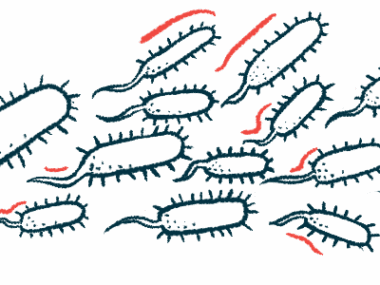Angioedema a possible side effect of Dupixent treatment: Case study
Approved inflammation therapy seen to trigger swelling in woman, 47
Written by |

The use of Dupixent (dupilumab), an approved treatment for skin and respiratory conditions linked to a specific type of inflammation, led to the development of angioedema in a woman in her 40s, as described in a new case report from U.S. researchers.
The woman, who had a type of chronic rhinosinusitis — an inflammatory disease of the sinuses — experienced lip and forehead swelling after treatment with Dupixent. Her symptoms eased after the injections were stopped.
“To the best of the authors’ knowledge, this is the first report of [Dupixent-associated] angioedema in an adult,” the researchers wrote.
The case study, “Dupilumab-Associated Angioedema in an Adult: A Case Report of an Adverse Event and Literature Review,” was published in the journal Cureus.
1st reported case linking Dupixent treatment to angioedema in an adult
Angioedema is the medical term for swelling that affects the deep layers of the skin. There are several types of angioedema, depending on its underlying causes.
Dupixent is an approved treatment for moderate to severe eczema, a skin disease, and for hard-to-treat asthma and chronic rhinosinusitis with nasal polyposis. This type of rhinosinusitis is marked by the enlargement of benign growths inside the nose that can cause pain, nasal congestion, and runny nose, and may affect breathing.
Administered via subcutaneous or under-the-skin infections, Dupixent is an antibody-based therapy designed to block IL-4 and IL-13 signaling. This signaling is involved in a form of inflammatory responses, called type 2 inflammation, that contribute to several skin and respiratory conditions.
Dupixent was reported in a previous study to cause angioedema in a 12-year-old girl with eczema.
Now, researchers at the University of Arizona College of Medicine have described the case of a 47-year-old woman who developed angioedema after being treated with Dupixent for recurrent chronic rhinosinusitis with nasal polyposis.
In adults, the recommended therapy regimen comprises two initial 300 mg injections followed by a 300 mg injection every other week.
This patient had a history of polypectomy, a surgery to remove polyps in people with this condition, but it had led in her case to only temporary relief.
About 10 years later, she went to an ear, nose, and throat doctor — called an ENT for short, and officially, an otolaryngologist — complaining of persistent nasal congestion. The clinician started her on Dupixent treatment.
The woman was given a first dose of Dupixent at that clinic without any reaction, but 10 days after the second injection her lips and forehead became swollen. No skin redness, visible rash, or respiratory distress were reported. The swelling was nearly resolved after treatment with a corticosteroid.
She received a third dose of Dupixent but, one week later, the swelling returned. This time, treatment with steroids failed to completely resolve the swelling.
“Despite these symptoms, she was still given her scheduled fourth dose and suffered worsening swelling again one week following injection,” the researchers wrote.
Dupixent was discontinued and, in the following two months, her swelling eased. During this time, the woman was referred to the researchers’ practice for further assessment.
Prescribers providing anticipatory guidance should be aware of this possible side effect, and clinicians may consider adding [Dupixent] to their differential diagnoses for otherwise unexplained angioedema.
Blood work showed normal levels of C1-INH, C3, and C4 — which are all typically low in people with hereditary angioedema, thereby not supporting the presence of an inherited, genetic form of the disease.
Based on the development of lip and forehead swelling following three separate Dupixent injections, the physicians decided to completely stop Dupixent treatment. The patient was instead treated with fluticasone nasal spray (a glucocorticoid), which eased her nasal symptoms.
No swelling was seen at her 10-month follow-up and, at the time of the study’s publication, the patient was being considered for polypectomy for further relief of nasal symptoms.
“To date, only a single case of angioedema associated with [Dupixent] has been reported in a child, but never in an adult,” the researchers wrote, adding that the pediatric case was marked by rash, swelling of the cheeks and lips, and gastrointestinal cramping.
“Prescribers providing anticipatory guidance should be aware of this possible side effect, and clinicians may consider adding [Dupixent] to their differential diagnoses for otherwise unexplained angioedema,” the researchers wrote.
Further research will be needed to elucidate the mechanism behind Dupixent-induced angioedema, the team also noted.






